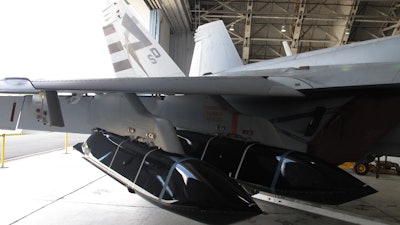
BAE Systems has started production on a new sensor technology for Long Range Anti-Ship Missiles (LRASM) after a $40 million order from Lockheed Martin.
The sensor allows the missile to seek and attack specific high-threat maritime targets within groups of ships, including those protected by sophisticated anti-aircraft systems.
The missile’s range, survivability, and lethality capabilities are designed to help warfighters more effectively conduct missions in denied environments from beyond the reach of return fire ― meeting a pressing need for both the U.S. Navy and U.S. Air Force.
LRASM is a next-generation, precision-guided stealth missile capable of semi-autonomously detecting and identifying targeted enemy ships. The precision routing and guidance technology of the sensor ― which doesn’t rely exclusively on intelligence, surveillance, and reconnaissance systems, networking links, or GPS navigation ― enables the missile to operate effectively in contested domains and all weather conditions, day or night.
BAE Systems’ mid-course sensor technology incorporates the company’s software and hardware capabilities designed for the world’s leading electronic warfare aircraft platforms. The sensor system also represents the company’s approach to bringing precision guidance to small platforms and builds on the company’s expertise in signal processing and target detection and location.
As part of BAE Systems’ close work with LRASM prime contractor Lockheed Martin, the company provided the sensor technology that supported a recent successful demonstration of the anti-ship missile. The launch demonstrates LRASM’s ability to address the Navy's need for versatile, multi-platform precision munitions that enable distributed operations.
Work on the sensor technology will be conducted at BAE Systems’ facilities in Nashua, New Hampshire and Wayne, New Jersey.






















